Australian Tropical Rainforest Plants - Online edition
Eustrephus latifolius R.Br.
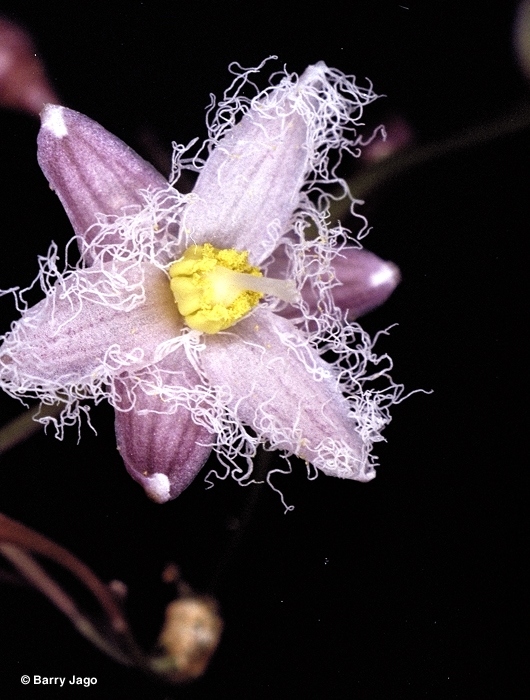
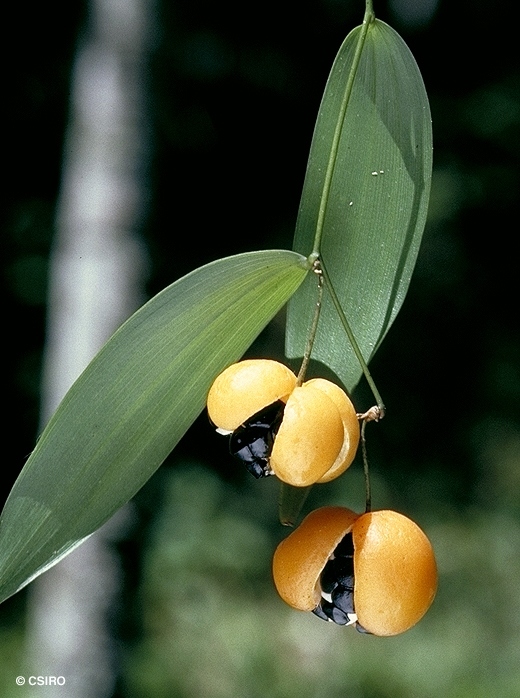

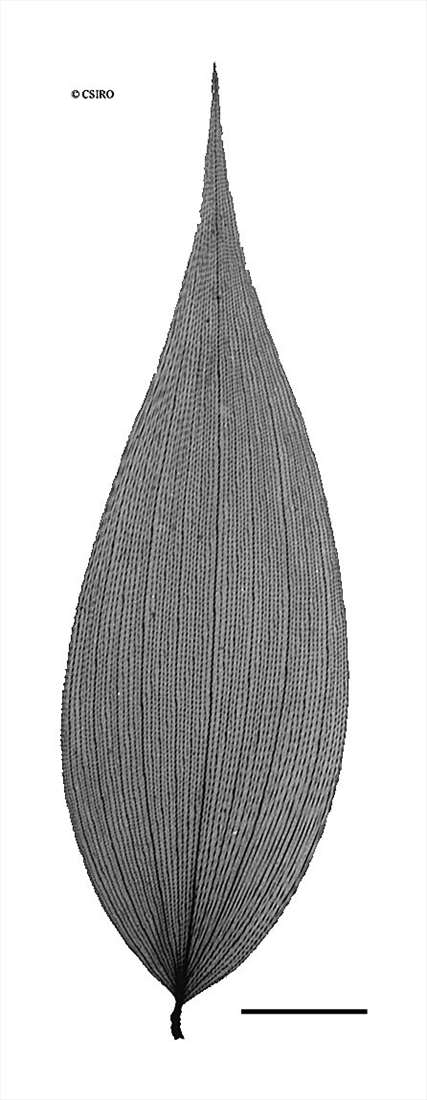
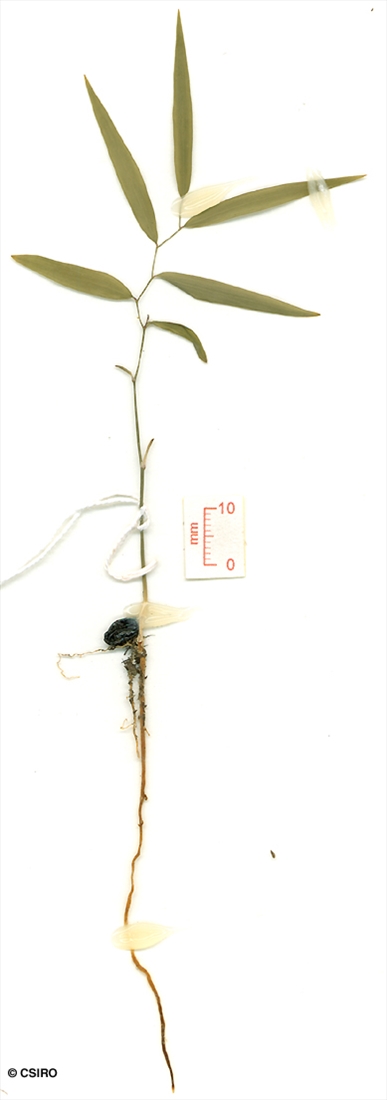
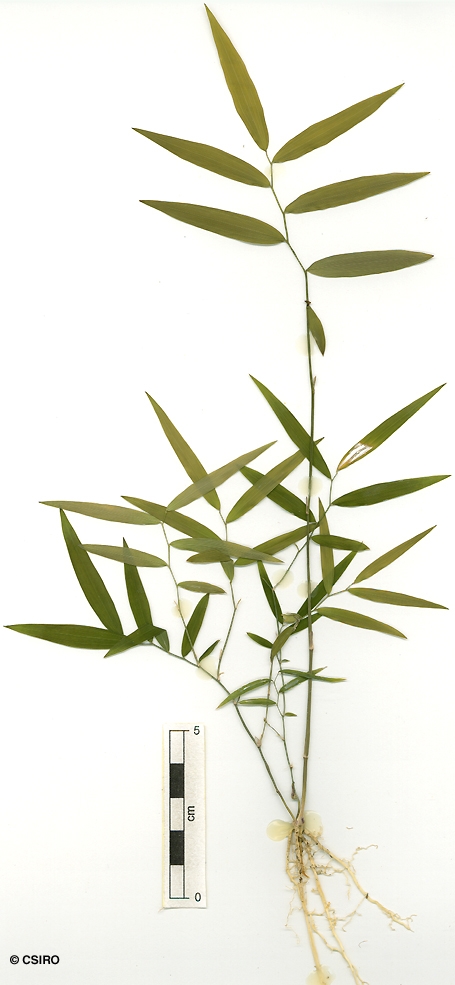
Ker Gawler, J.B. in Sims, J. (1809) Curtis's Botanical Magazine 31 : 1245. Type: Bot. Mag. 31: t. 1245 (1809).
Orange-vine; Wombat Berry
A slender vine not exceeding a stem diameter of 2 cm.
Leaf blades about 4-10.5 x 1.2-3.5 cm, petioles about 0.1-0.3 cm long, grooved on the upper surface. Venation longitudinal and parallel with 2-4 veins on each side of the midrib more prominent that the rest.
Flower stalks about 20-25 mm long, part pedicel and part peduncle. Sepals ovate to elliptic, about 7-8 mm long. Petals ovate to elliptic, about 7 mm long, margins fringed. Stamens 6. Anthers about 3.5-4 mm long, filaments flattened, about 0.5-1 mm long. Ovary ovoid, about 2 mm long. Style about 3 mm long.
About five cataphylls produced before the first true leaves. First true leaves narrowly elliptic to lanceolate, apex acute, petioles absent or very short. Leaf blades glabrous, venation longitudinal and parallel. At the tenth leaf stage: seedlings usually multistemmed. Leaves distichous, stems zig-zagged. Leaf blade narrowly elliptic, apex acute, base generally obtuse, venation longitudinal and parallel with about 10 prominent veins on each side of the midrib. Petiole very short or absent. Taproot white. Seed germination time 54 to 382 days.
Occurs in CYP, NEQ, CEQ and southwards as far as Victoria. Altitudinal range in CYP and NEQ from near sea level to 900 m. Grows in wet sclerophyll forest, monsoon forest, lowland and upland rain forest. Also occurs in Malesia and the Pacific islands.





